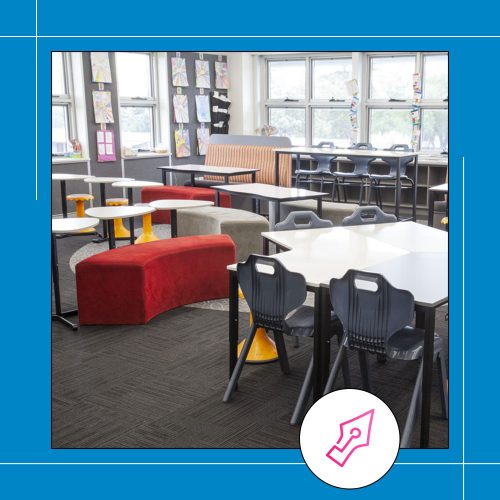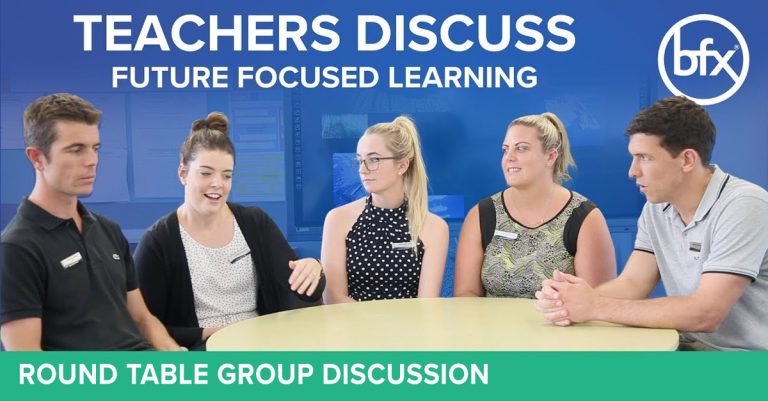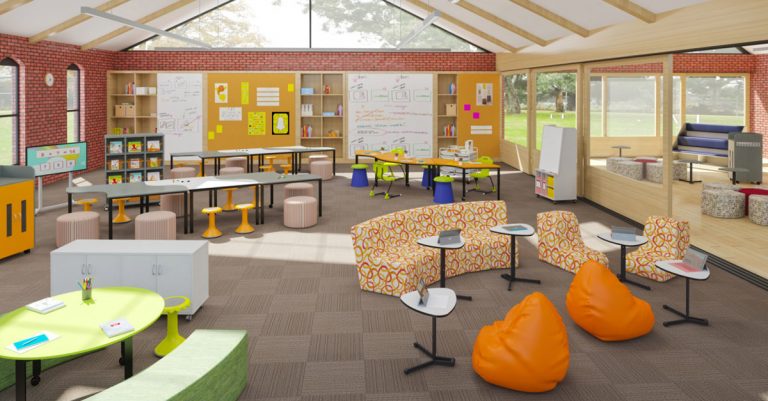One School’s Journey to Flexible Learning Environments
Principal, Stefan van Aanholt and Assistant Principal, Lisa McSweeney talk about the journey and positive outcomes the students have experience since making the switch to flexible classrooms. Watch the full case study video above to see these amazing spaces come to life.
About The School
St Nicholas Catholic Primary School was established in 1876 in Tamworth, Queensland. The catholic parish school hosts over 470 students and is committed to fostering an educational environment built on a love of learning, personal development, community and shared faith.
The Project
The project involved furnishing classrooms across years 1-6, as well as 3 common areas that can be utilised as teaching and learning spaces. The layout features flexible open plan areas that cater for mixed learning styles and gives students ownership in how and where they learn in the space.
The Vision
The vision was to create a cohesive space that aligns with the student’s and teacher’s needs. For this to be achievable, students, teachers and parents needed to come along on the journey and be involved in the whole process. The vision for these flexible learning spaces was enriched by a shared vision for growth cultivated by the whole school community.
Read More: St Nicholas Catholic Primary School
View the Full Gallery
of the Fitout
How involved were the students, teachers and parents in the process?
“Initially, we had the parents come in to look at the design, and we had the architects and our project manager address them. The fabulous thing about the architect’s work is that they presented a 3D model where we could virtually walk through these spaces, and I think that was key in getting many of the parents on board.” Assistant Principal, Lisa McSweeney said.
“With the students, we held a survey regarding naming the building. We wanted to give them the opportunity to have their say. So, we did a Google Survey Monkey with them, and we asked for their input about what they thought these spaces should be called and why. That’s how we came up with ‘The Hive‘ and ‘The Hub‘ and ‘The Zone‘.”
“The Hive” is for K1 where student learning is just starting, and it’s busy, and it’s buzzing, and it’s really exciting. The Hub” is where the wheels of what the students are learning are being put in motion. They’re starting to understand why they’re there. What the intention is behind their learning. By the time they are in “The Zone”, which is our senior students, year 5 and 6, we want the students to take ownership of their learning."
John Doe
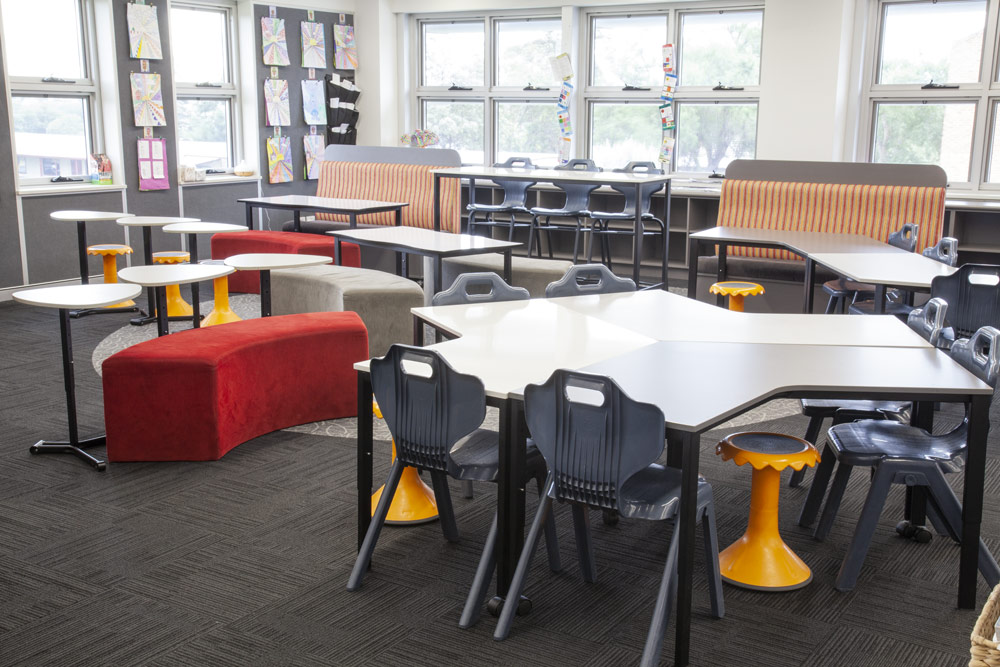
“They’re in control, they’re in the zone of learning, and they need to self-motivate. Teachers are there to facilitate, but we encourage the students to ‘own’ their learning.”
“As for the staff, during the weekly staff meetings, we were always looking at the plans. We gave them a look at their spaces and discussed with them where each grade was going to be located. Once we were able to show teachers where their spaces were, they were able to have input, and have their voices heard.”
Principal, Stefan van Aanholt also said, “The teachers were engaged the whole time with the selection process. They helped decide what furniture was chosen. Initially, we trialed some furniture to see what worked, what didn’t work and what was most effective before we embarked on the whole project.
“The students were also surveyed on what furniture they thought worked well. We started off with just a small sample, and from there we were able to ask the students “What did you like and why?” Lisa added.
Shop Our Full Range Of Collaborative Learning Furniture
“They’re in control, they’re in the zone of learning, and they need to self-motivate. Teachers are there to facilitate, but we encourage the students to ‘own’ their learning.”
“As for the staff, during the weekly staff meetings, we were always looking at the plans. We gave them a look at their spaces and discussed with them where each grade was going to be located. Once we were able to show teachers where their spaces were, they were able to have input, and have their voices heard.”
Principal, Stefan van Aanholt also said, “The teachers were engaged the whole time with the selection process. They helped decide what furniture was chosen. Initially, we trialed some furniture to see what worked, what didn’t work and what was most effective before we embarked on the whole project.
“The students were also surveyed on what furniture they thought worked well. We started off with just a small sample, and from there we were able to ask the students “What did you like and why?” Lisa added.
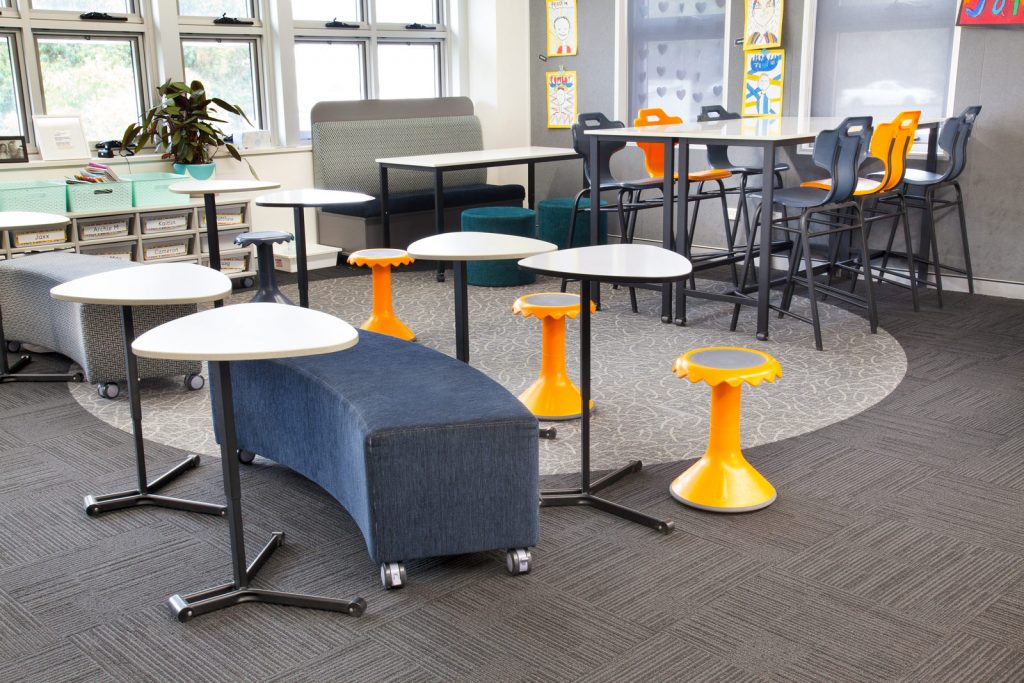
How are the teachers adapting their pedagogy to incorporate the space and the furniture?
“They work in teams of three or teams of four weaving together different strategies, pedagogies, practices and resources. This journey has allowed them to develop and grow. They’re modelling learning as adults.”
John Doe
Shop Collaborative Learning Furniture
“They’re modelling collaboration and what that looks like.” Lisa Mc Sweeny said.
“They make mistakes and kids see the teachers make mistakes and move on. It’s pretty powerful. Especially for encouraging a growth mindset with the students.” Stefan van Aanholt continued.
Lisa Mc Sweeny continued to say “What has also helped is that all the furniture is mobile. The teachers have the ability to engage students every day just by arranging the learning space into a new configuration. Or if they put them into specific groups, the students can take the furniture where they like to work whenever they want.”
“It’s incredible that the classrooms look different from day to day depending on what the students are doing, and our teachers adapt to that.” Stefan van Aanholt said.
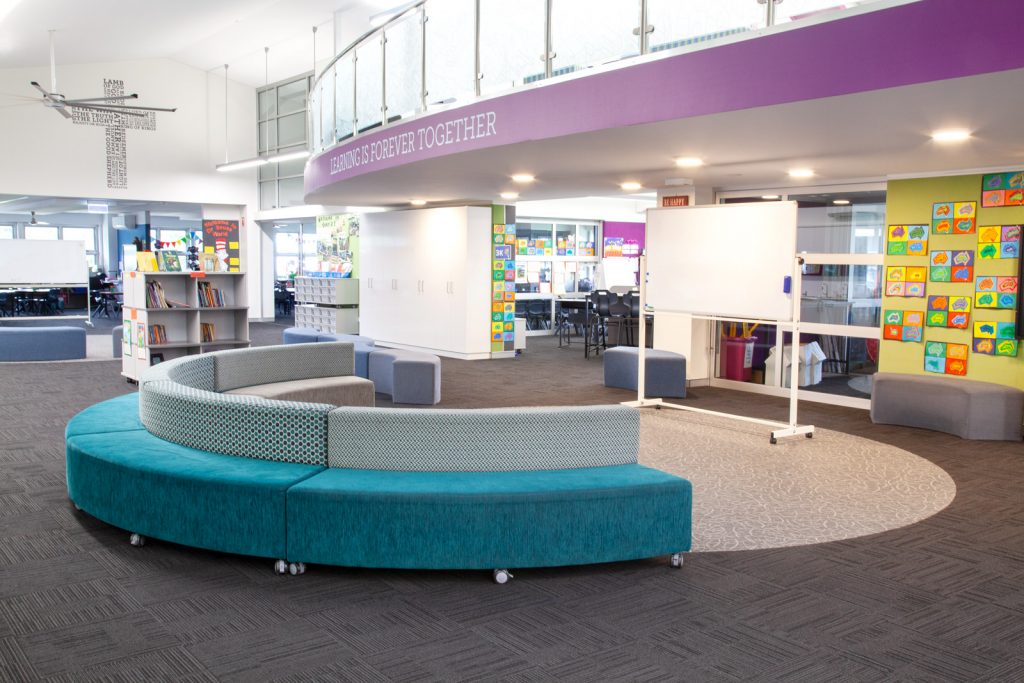
The Results
A year has passed since St Nicholas School’s classrooms were fitted out with flexible learning spaces from BFX Furniture’s Future Focused Learning range. One of the learning philosophies St Nicholas embodies is enstilling their students with a growth mindset.
One of the ways student’s growth is measured is through ACER PAT (Progressive Achievement Test) testing which is conducted during term 1 and again in term 4. St Nicholas’ aim was to improve student learning according to the Australian average of the ACER PAT (Progress Achievement Test) scores plus an additional 25%.
At the end of 2017, 70% of students had improved their test scores.
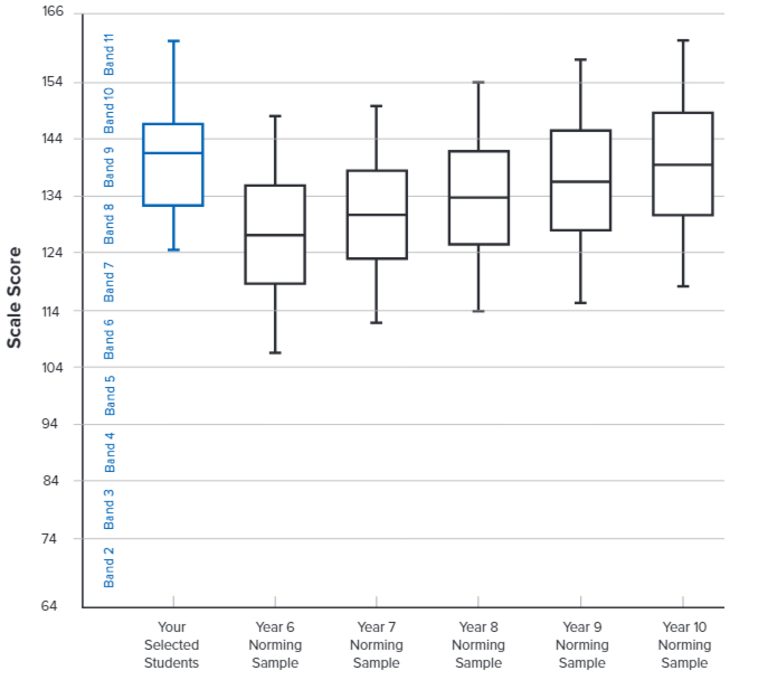
Key Findings
National Growth Target:
Improve by 3 Marks
Term 1 Average Cohort Score:
128.7
Term 4 Average Cohort Score:
140.5
Estimated Growth Target: Improvement by 4 Marks
Achieved Growth Target:
Improved by 11.7
Difference:
7.7 marks
PAT Maths/Norm Reference Report (Between 16/10/17 and 13/11/17)
The Year 6 Maths cohort demonstrated by far the most growth with their average cohort score rising from 128.7 to 140.5. The students achieved well above the year 6 national average and even performed at a year 10 level. They improved by 11.7 Marks, transcending the original 3 Marks they were asked to grow by according to the National Growth Target.
John Doe
There is an exciting shift happening in Australian schools. It is a shift from traditional classrooms and pedagogy to flexible learning environments and pedagogy of the future.
This project has not only highlighted the impact flexible learning spaces has on student outcomes but also how instrumental student, teacher and parents involvement can be in creating purposeful spaces that fulfill the needs of all.
Their collective input guided the process and ensures St Nicholas School’s vision for learning will carry through to future generations.


